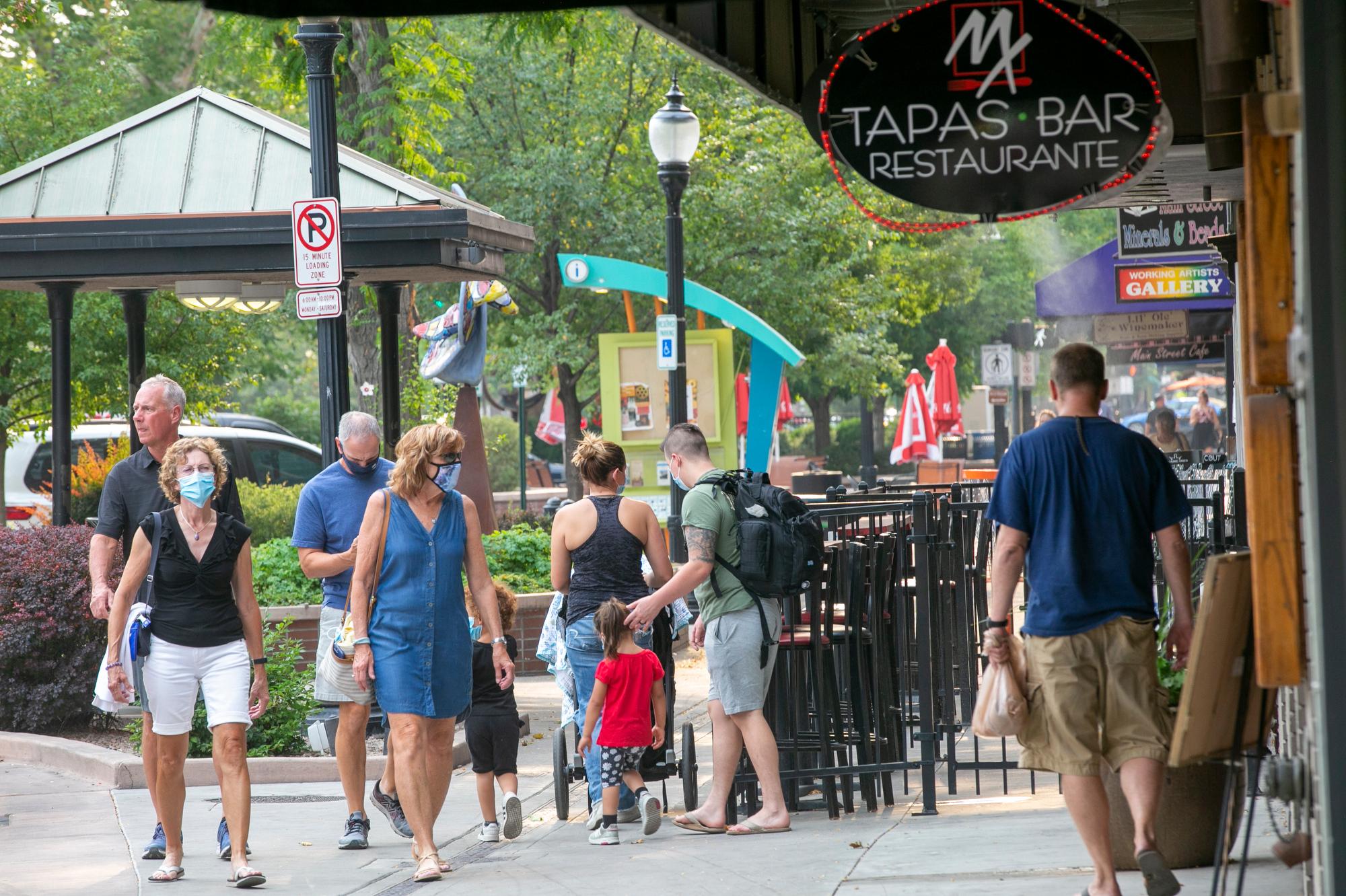
When Stacey Mascarenas tested positive for COVID-19 in August, she had no idea how she’d contracted it. Her friends, family and coworkers all tested negative. Mascarenas, who lives in the small town of Fruita, always made sure to wear a mask when going out in public.
What she didn’t know was that within a few months, Mesa County would go from being a Colorado coronavirus success story to having one of the highest COVID-19 infection rates in the state.
Looking at the data, “I mean it is a spike, like a 90-degree spike,” she said.
Mascarenas is a spokesperson for Family Health West, which runs Fruita’s Colorado Canyons Hospital and Medical Center. She explained that Mesa’s hospitals had all worked together to prepare for a surge that hadn’t arrived, even as coronavirus battered Colorado’s resort towns and big cities earlier this year.
Instead, Mesa County became the first in Colorado to get permission from the state health department to reopen restaurants and gyms. By early September, it was one of three counties able to open their economies wider than anywhere else in the state.
In a press conference, Gov. Jared Polis called Mesa a “long leader from the very start” in reopening.
“And they’ve been very successful — thus far,” he said, and quickly rapped on his desk. “Knock on wood.”
It’s been a bit more than two months since that press conference, and according to the latest data, Mesa County has had more than 3,600 cases. About half of those were in the last two weeks.
For context, it took the county the first four months of the pandemic to record its first 100 cases.
The surge started after Mesa County got permission from the state health department to scale back coronavirus restrictions. But Mascarenes said she doesn’t think that’s to blame. She said it was something else.
“People just kind of got complacent,” she said. “And we’re seeing the effects of it.
Local hospitals still have enough capacity to treat new coronavirus cases for now, she said, but since last week, they’ve prohibited visitors, except for in a few special circumstances. All around them, the county is locking down the most it’s been since spring. Public gatherings of any size are no longer allowed. Mesa County’s main, sprawling school district — one of the first in Colorado to offer in-person instruction during the pandemic — switched back to remote learning for all its middle and high schools effective Monday. Schools in District 51 had not been in remote learning since the end of the last school year.
District 51 spokesperson Emily Shockley said school officials are urging people to be cautious, “and maybe just have those tight-knit family gatherings for Thanksgiving and Christmas and those other holidays this winter.”
The district will decide next week whether middle and high schools can return to in-person classes after the Thanksgiving break.
“So we’re just going to have to see how it goes and just ask people to be on their best behavior,” Shockley said, “and we’ll see what comes of it.”
It’s not just schools that are at stake. Local businesses are also taking a hit. They can no longer hold events and must limit their capacity to 25 percent, except for those with a special designation from the local health department. Jeff Kuhr, executive director of Mesa County Public Health, explained that these restrictions can be reversed, but it will require the help of all residents.
“We really are trying to make a plea to the individuals of, you know, ‘Do your best and do your part, and have some pride in our community,’” he said.
Health officials said that includes wearing a mask in indoor, public spaces — or when people are unable to socially distance.
However, the reality is that when you walk into a grocery store in the county, there’s often at least a handful of people without masks. That’s difficult for Mascarenas to accept.
“Oh, it just infuriates me,” she said, “because this is why we’re seeing the increase in numbers.”
For her, it’s a public health issue and also a deeply personal one. She remembers going to bed one night when she was still struggling with COVID-19 and wondering if she was going to die.
“It goes through your head,” she said. “It was scary.”
Mascarenas said she prayed more than she ever had and lived in fear that she had given the virus to her mother, who has pre-existing health issues.
“I don’t know what I would have done,” she said.
But her mom has not gotten COVID-19, and months after her own diagnosis, Mascarenas said she is doing pretty well, though she has a constant dull headache and sometimes still loses her sense of taste. Despite those few unmasked people she sees at the grocery store, she thinks that locals have started to take COVID-19 seriously, as it begins to affect them personally.
“It’s getting the attention now that it deserves, that it deserved you know, a while ago,” she said. “Hopefully, we’ll start seeing a decline.”
It hasn’t happened yet. Just a few days ago, Mesa County blew past its record number of daily cases.









